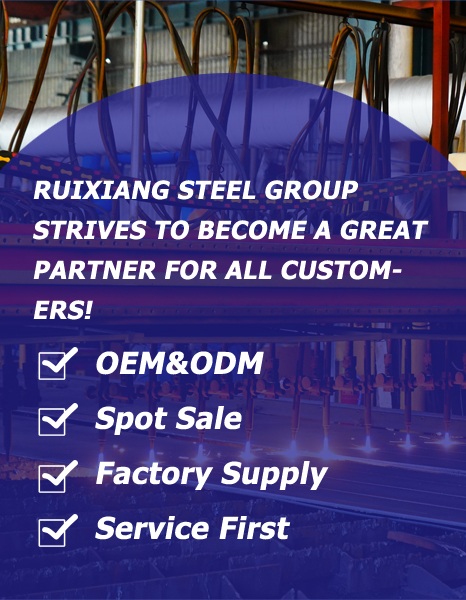Hot-Dip Galvanizing vs. Electro-Galvanizing: A Comparative Guide
 Click:222Edit: Admin
Click:222Edit: Admin Time:2025-10-04 16:43:56
Time:2025-10-04 16:43:56
Hot-Dip Galvanizing vs. Electro-Galvanizing: A Comparative Guide
When selecting the right galvanization method for your steel products, understanding the key differences between hot-dip galvanizing and electro-galvanizing is crucial for making an informed decision that balances performance, cost, and application requirements. Both processes provide protective zinc coatings to prevent steel from corroding, but they achieve this through fundamentally different methods and yield distinctly different results.
The Fundamental Process Differences
Hot-dip galvanizing (HDG) involves immersing steel components into a molten zinc bath at temperatures typically ranging from 445–465°C . This process creates a metallurgical bond between the zinc and the steel substrate, forming a layered structure of zinc-iron alloy phases topped with pure zinc . The preparation typically includes steps like degreasing, acid pickling, fluxing, followed by the immersion in molten zinc, and finally cooling .
In contrast, electro-galvanizing (EG) is an electrochemical process where steel is submerged in an electrolyte solution containing zinc salts, and an electric current is used to deposit zinc ions onto the steel surface . This method operates at ambient temperatures and doesn't create the metallurgical bonds characteristic of the hot-dip process. The process typically involves electrolytic cleaning, acid pickling, and then electroplating zinc onto the steel surface in a plating bath .
Coating Characteristics and Performance
The different formation processes result in significantly different coating properties:
Coating Thickness:
Hot-dip galvanizing: 50-150μm (typically 54μm to over 100μm)
Electro-galvanizing: 5-30μm (typically around 10μm)
Coating Appearance:
Hot-dip coatings have a spangled, crystalline finish that can range from bright to dark gray, with a relatively rougher texture
Electro-galvanized coatings offer a smooth, uniform appearance with a bright, clean finish that's more visually appealing for exposed applications
Corrosion Protection:
Hot-dip galvanizing provides superior, long-lasting protection due to its thicker coating and sacrificial properties, with an outdoor service life of 20-50 years
Electro-galvanizing offers moderate corrosion resistance suitable for indoor applications or milder environments, often requiring additional treatments like passivation to enhance performance
Coating Adhesion:
The hot-dip process creates a metallurgical bond with strength values between 159-211 DPN, which actually exceeds the hardness of base steel (159 DPN) in some layers
Electro-galvanized coatings have a mechanical bond that may be more susceptible to damage from impact or abrasion
Application-Specific Considerations
Hot-dip galvanizing excels in:
Outdoor structures (power transmission towers, bridges, guardrails)
Architectural elements exposed to weather
Agricultural equipment and fencing
Industrial frameworks with long-term exposure elements
Applications where coating thickness and durability are prioritized over cosmetic appearance
Electro-galvanizing is preferable for:
Indoor hardware and components
Automotive parts requiring precise tolerances
Electrical enclosures and chassis
Applications where a smooth, attractive finish is important
Complex shapes that might trap molten zinc in hot-dip processes
Products requiring painting or additional finishing
Economic and Practical Factors
Initial Cost:
Electro-galvanizing typically has lower initial equipment and processing costs
Hot-dip galvanizing requires significant investment in heating systems and zinc baths
Long-Term Value:
Hot-dip galvanizing offers lower lifetime cost for outdoor applications due to minimal maintenance requirements
The extended service life of hot-dip galvanized structures often makes them more economical over decades of use
Production Considerations:
Electro-galvanizing allows for precise thickness control through current density adjustment
Hot-dip galvanizing provides better coverage on edges and corners where zinc naturally builds up thicker, offering enhanced protection at vulnerable points
Making the Right Choice for Your Project
At Ruixiang Steel Group, we recommend considering these key factors when selecting a galvanization method:
Environmental exposure - Severe or outdoor environments favor hot-dip galvanizing
Aesthetic requirements - Visible consumer products often benefit from electro-galvanizing
Dimensional tolerances - Precision components may require electro-galvanizing
Project lifespan expectations - Long-term infrastructure projects justify hot-dip galvanizing
Budget constraints - Balance initial costs against long-term maintenance
Both methods effectively protect steel from corrosion through the sacrificial nature of zinc. Even when the coating is damaged, zinc will sacrificially protect the exposed steel, though hot-dip galvanizing's thicker coating provides more robust protection .
By understanding these fundamental differences between hot-dip and electro-galvanizing processes, you can select the most appropriate corrosion protection strategy for your specific application, ensuring optimal performance, cost-effectiveness, and longevity for your steel components.
 Click:222Edit: Admin
Click:222Edit: Admin Time:2025-10-04 16:43:56
Time:2025-10-04 16:43:56

